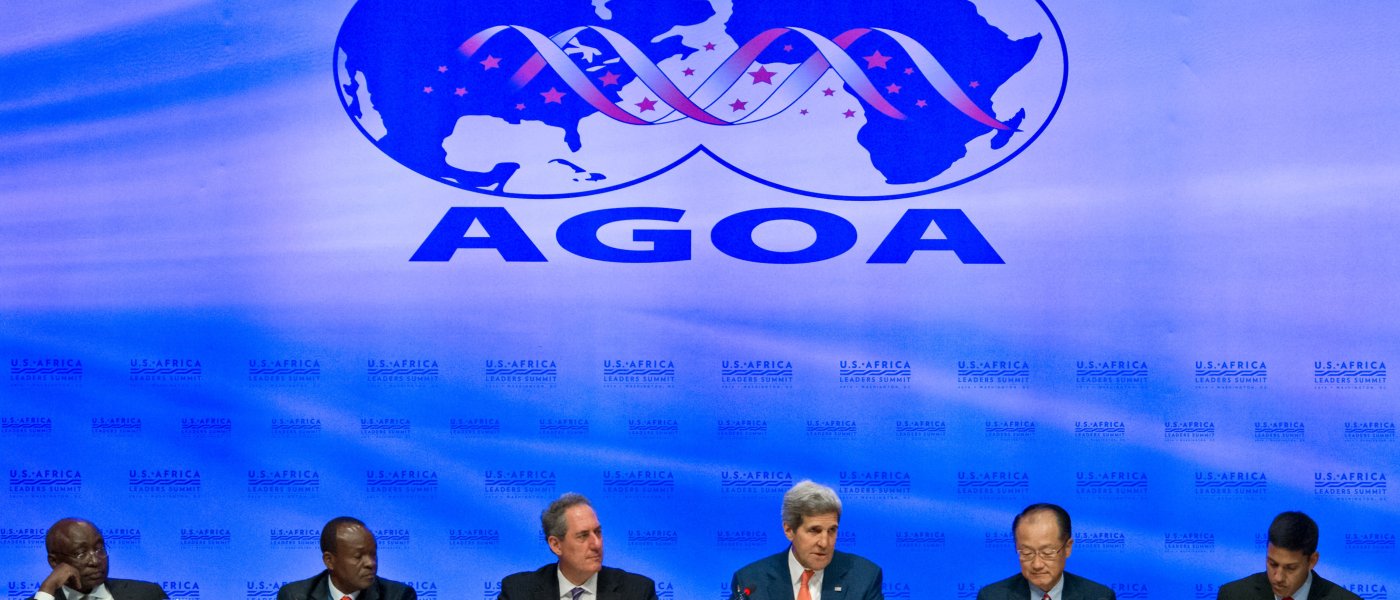Adding a Critical Minerals Agreement to the AGOA Reauthorization

The African Growth and Opportunity Act (AGOA) is a unilateral trade preference program that was enacted by President Bill Clinton in 2000. With its authorization expiring in 2025, there is an ongoing debate on how to reform it. By adding a critical minerals agreement to the AGOA reauthorization, U.S. Congress can incentivize non-Chinese investments in both mining and processing in eligible African countries, which have key reserves of the minerals it has long turned to China for.
Q1: What is the benefit of a critical minerals agreement?
A1: Section 30D of the Inflation Reduction Act (IRA) provides up to $7,500 for buying a new electric vehicle (EV) if certain sourcing criteria are met for the critical minerals utilized and battery manufacturing. To receive the minerals portion of the 30D tax credit, a set percentage of the value of the minerals utilized in the battery must be extracted or processed in the United States or a country that the United States has a free trade agreement (FTA) with. This year, 50 percent of the critical minerals must be sourced from the United States or an FTA partner. This sourcing requirement increases steadily, reaching 80 percent in 2027.
FTAs are fraught with political complexities and can take years to pass. A more politically palatable and time-friendly approach to unlocking 30D benefits is through a critical minerals agreement (CMA), which allows minerals sourced from a country (or set of countries) to meet sourcing requirements for the section 30D tax credit. The U.S.-Japan CMA signed in March 2023 was the first of its type. Although Japan did not have an FTA with the United States, the CMA qualifies Japan to meet IRA sourcing requirements for 30D tax credits.
Q2: Why is the AGOA reauthorization a good vehicle for adding a critical minerals agreement?
A2: The U.S.-Japan CMA was controversial, not because of the substance, but for procedural reasons—the Biden administration signed it without congressional approval. Extending AGOA already requires congressional reauthorization. Congress can use the moment to add a CMA to allow critical minerals sourced in the 35 AGOA-eligible countries to be eligible for IRA tax credits. The opportunity doesn’t come up often. AGOA went into effect in 2000 for a 15-year period, before being extended for another 10 years in 2015. The recently published draft bill for AGOA authorization extends it for a further 16 years—a period of time that is critical for advancing U.S. critical minerals interests given the long-term nature of developing mines.
Q3: Why are AGOA-eligible countries strategic to U.S. critical minerals interests?
A3: The United States is highly reliant on China for many critical minerals: it is wholly import-dependent for 12 minerals and 50 percent or more import dependent for another 31 minerals. China was the leading source of imports for 26 of those minerals. The U.S. government has accelerated efforts to deter procuring critical minerals from China or Chinese-owned companies. After December 31, 2024, when the Foreign Entity of Concern (FEOC) rules go into effect, electric vehicle batteries with critical minerals that are extracted, processed or recycled in a FEOC—or by a firm with over 25 percent cumulative FEOC ownership in a third country—will be ineligible for IRA tax credits.
AGOA-beneficiary countries have rich reserves of minerals that the United States has historically relied on China for. For example, China has historically dominated graphite production—in 2021, it produced 79 percent of the world’s supply. The United States has less than 1 percent of the world’s graphite reserves. The precarity of the graphite supply chain came into focus in October 2023, when China banned graphite exports. Three AGOA beneficiaries—Madagascar, Mozambique, and Tanzania—have significant reserves of graphite. Taken together, they have roughly the same amount of graphite as China and could offer alternative supply to the new graphite processing facility funded by the Department of Energy in Louisiana.
Similarly, although the U.S. government has provided over $200 million in funding for domestic rare earths processing projects since 2020, the United States has less than 2 percent of the world’s rare earths supply, with Mountain Pass being its sole mine. Five AGOA beneficiary countries (Angola, Malawi, Mozambique, Namibia and South Africa) together have roughly 50 high-grade rare earths deposits. The United States needs to increase its access to rare earths, to make its separation and processing facilities useful to its national interests. These countries offer a rich supply. Other countries have already made advancements; in 2023, the European Union and Japan signed cooperation agreements with Namibia for rare earths.
Q4: Is adding a CMA to AGOA mutually beneficial to both the United States and eligible African countries?
A4: African policymakers have rightfully asked what benefits a CMA in AGOA will bring them, given they can sell their raw minerals to any number of buyers. A CMA can increase the amount of investment flowing into African countries, across the value chain. For example, auto manufacturers from the United States, Australia, Canada, Japan, and Korea are all incentivized to procure minerals extracted and processed in African countries given they will still get their 30D tax credits, making it a win-win scenario as African countries will also generate revenue and jobs.
For U.S. policymakers, a CMA is an incentive for the private sector to make the investments needed to reduce reliance on Chinese supply chains—a bipartisan priority. At face value, the 30D tax credit is designed to be a demand-side incentive by reducing the cost of buying an electric vehicle by up to $7,500. But when paired with the FEOC rules, it is properly understood as a demand signal for a supply chain that is independent of Chinese control. Attaching a CMA to AGOA can boost economic development in resource-rich countries, deepen U.S. economic relationships on the continent, and build resilience into clean energy supply chains.